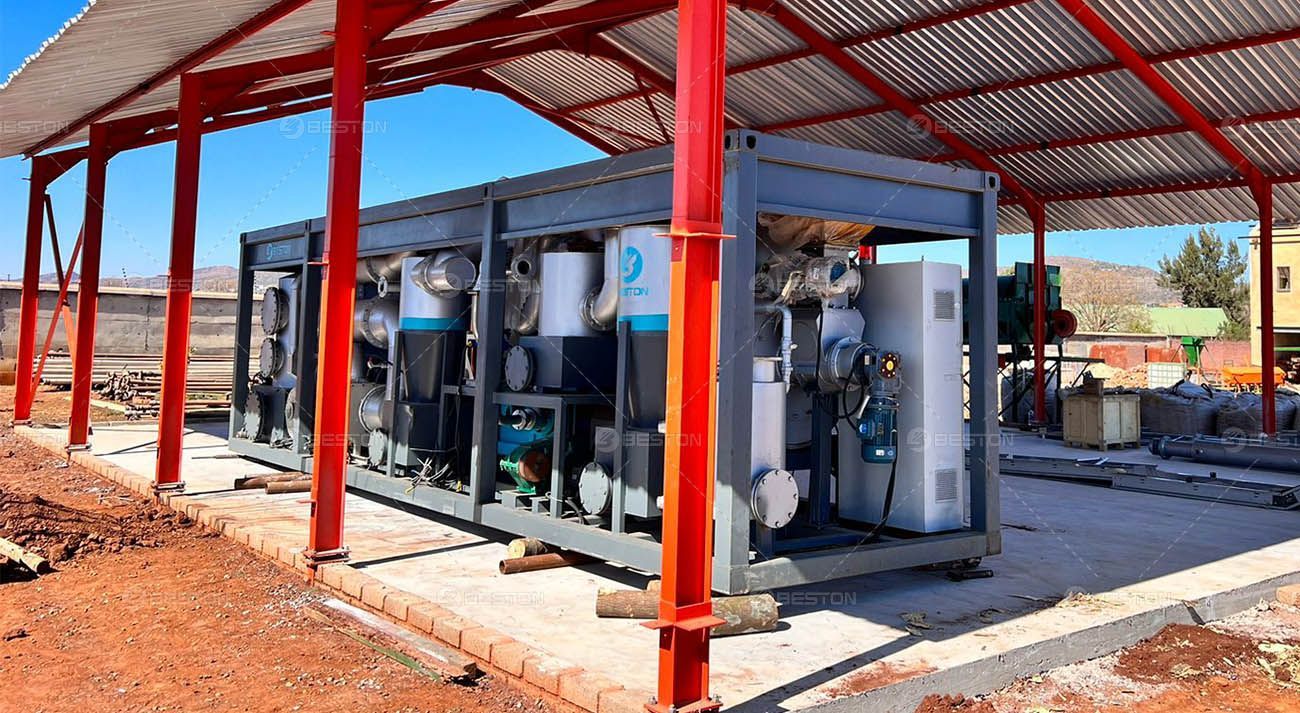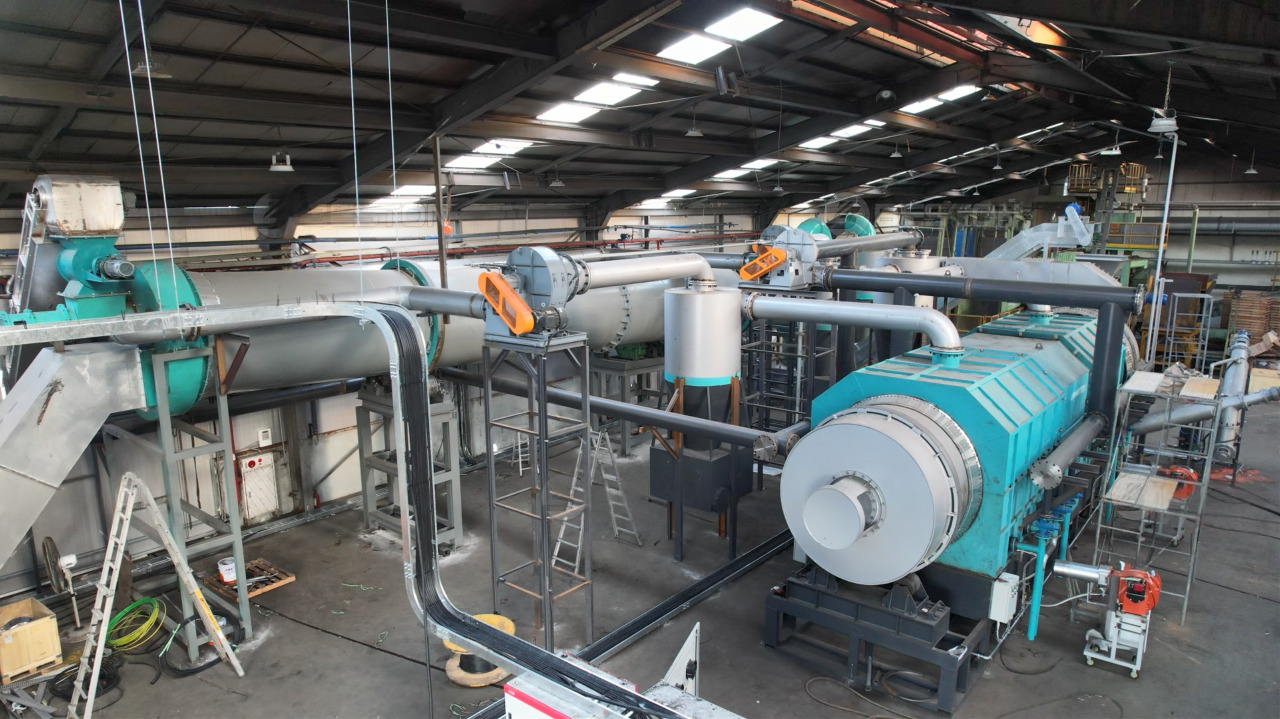Application Scenarios of Wood Pyrolysis Plant

Wood pyrolysis plants represent a critical innovation in the sustainable management of wood waste and biomass. These plants utilize pyrolysis technology to convert wood and other organic materials into valuable byproducts, including bio-oil, syngas, and biochar. The diverse applications of wood pyrolysis plants illustrate their potential to contribute significantly to resource efficiency, waste management, and energy production.
Overview of Wood Pyrolysis Technology
Wood pyrolysis is a thermal decomposition process conducted in the absence of oxygen, where wood is heated to high temperatures. This process breaks down complex organic molecules into simpler compounds. The primary products of wood pyrolysis include:
- Bio-oil: A liquid product that can be refined into various fuels and chemicals.
- Syngas: A gaseous mixture mainly comprising hydrogen, carbon monoxide, and carbon dioxide, useful for energy generation.
- Biochar: A solid, carbon-rich material that can be used as a soil amendment or in industrial applications.
The efficiency and output of a wood pyrolysis plant depend on factors such as feedstock type, pyrolysis conditions, and the technology employed.
Application Scenarios
1. Biomass Waste Management
Wood pyrolysis plants play a crucial role in managing biomass waste, which includes wood chips, sawdust, and forestry residues. Traditionally, such waste might be burned or left to decay, leading to environmental concerns such as air pollution and methane emissions. Pyrolysis provides a sustainable alternative by converting this waste into valuable products while minimizing harmful emissions. The biochar produced can be used to enrich soil, reducing the need for synthetic fertilizers and improving soil health.
2. Energy Production
Energy generation is a prominent application of wood pyrolysis technology. The syngas generated during pyrolysis can be utilized as a renewable energy source. It can be combusted to produce electricity or heat, contributing to energy diversification and reducing reliance on fossil fuels. Additionally, bio-oil can be further processed to produce biofuels, offering a sustainable alternative to petroleum-based fuels. Wood pyrolysis plants can thus support energy security and contribute to cleaner energy solutions.
3. Soil Enhancement
Biochar, one of the byproducts of wood pyrolysis, is increasingly recognized for its benefits in soil enhancement. When added to agricultural soils, biochar improves soil structure, increases water and nutrient retention, and promotes microbial activity. This can lead to enhanced crop yields and reduced need for chemical fertilizers. By utilizing wood pyrolysis plants to produce biochar, agricultural practices can become more sustainable, contributing to soil health and agricultural productivity.
4. Carbon Sequestration
The carbon sequestration potential of wood pyrolysis is significant. By converting wood into biochar, carbon that would otherwise be released into the atmosphere as CO2 is effectively stored in a stable form. This contributes to climate change mitigation efforts by reducing greenhouse gas concentrations. Wood pyrolysis plants thus offer a dual benefit: managing wood waste and sequestering carbon, aligning with global climate goals.
5. Industrial Applications
Wood pyrolysis products have several industrial applications beyond energy and soil improvement. Bio-oil can be refined and used as a feedstock for producing chemicals and materials, such as phenols, acids, and resins. Biochar can be utilized in various industrial processes, including metal production and water treatment. The versatility of wood pyrolysis products enhances their utility in diverse industrial sectors, contributing to resource efficiency and sustainability.
6. Waste Reduction and Recycling
The efficient processing of wood waste through pyrolysis supports waste reduction and recycling efforts. Wood pyrolysis plants convert waste materials into valuable products, reducing the volume of waste that needs to be managed through traditional methods. This contributes to a circular economy approach by turning waste into resources, minimizing landfill use, and promoting sustainable waste management practices.
7. Rural Development
In rural areas, wood pyrolysis plants can stimulate economic development by creating local jobs and providing a source of income for communities involved in wood waste collection and processing. The establishment of pyrolysis facilities can also support local industries by supplying biochar and bio-oil for various applications. This local economic activity fosters sustainable development and enhances the resilience of rural economies.
8. Disaster Recovery
In the aftermath of natural disasters, such as wildfires or hurricanes, large quantities of wood waste may accumulate. Wood pyrolysis plants offer a solution for processing this waste efficiently. By converting disaster debris into charcoal made from wood and other products, these plants can aid in recovery efforts and reduce the environmental impact of waste. This application underscores the role of pyrolysis technology in addressing emergency situations and supporting recovery processes.
Technological Considerations
1. Feedstock Variety
Wood pyrolysis plants can process various types of feedstock, including wood chips, sawdust, and agricultural residues. The choice of feedstock influences the characteristics and yield of the pyrolysis products. Effective feedstock management and preparation are essential for optimizing plant performance and product quality.
2. Process Optimization
The efficiency of a wood pyrolysis plant depends on the optimization of process parameters such as temperature, pressure, and residence time. Advanced pyrolysis systems incorporate precise control mechanisms to ensure optimal conditions for producing high-quality bio-oil, syngas, and biochar. Continuous monitoring and adjustment of these parameters are crucial for maximizing output and minimizing byproduct formation.
3. Environmental Compliance
Wood pyrolysis plants must adhere to environmental regulations to ensure that emissions and byproducts are managed responsibly. The integration of emissions control systems, such as gas cleaning and filtration, is essential for reducing the environmental impact of pyrolysis operations. Compliance with regulatory standards helps maintain the sustainability and acceptability of wood pyrolysis technology.
Conclusion
Wood pyrolysis plants offer a range of applications that contribute to sustainable waste management, energy production, soil enhancement, and industrial resource utilization. By converting wood and biomass into valuable byproducts, these plants support environmental protection, economic development, and resource efficiency. The diverse application scenarios of wood pyrolysis technology highlight its potential to address various challenges and promote sustainable practices across multiple sectors. As technology advances and awareness grows, the role of wood pyrolysis plants in achieving sustainability goals is likely to expand, fostering a more resource-efficient and environmentally friendly future.



